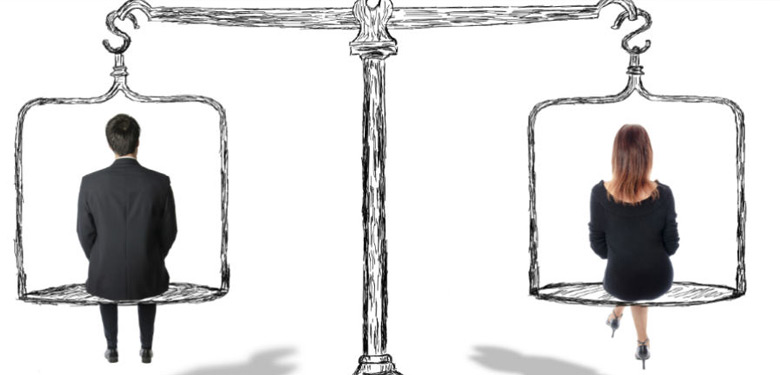
Measuring Gender Equality
Advancing and empowering women is too big an assignment for any sector alone, be it government, international organizations or civil society. The active engagement of business as the engine of job creation, innovation, and investment is essential.
The Women’s Empowerment Principles, a joint initiative of UN Global Compact and UN Women, was developed in 2010 to provide a holistic framework to empower women and girls in the workplace, marketplace, and community. The seven Women’s Empowerment Principles (WEPs) are intended to serve as a roadmap for action on gender equality throughout any company’s activities – regardless of size, sector or country, they are based on real-life business practice and seeks to elaborate the gender dimension of corporate sustainability.

Nearly 1,500 CEOs from around the world have already signed the CEO Statement of Support for the Women’s Empowerment Principles and committed to continuous leadership and improvement on gender equality.
Why is Women Empowerment a game changer?
Unlocking the potential of women and girls results in significant positive impacts on business productivity and the bottom line, as well as for families and communities around the world.
The business and economic case for advancing gender equality is stronger than ever. Recent research indicating that achieving gender equality can add $12 trillion to the global economy and gender diversity at all levels of the organization leads to increased profitability, productivity, and organizational effectiveness. Governments and Civil Society are increasingly looking to engage and partner with companies that have a commitment to advancing gender equality. Furthermore, investors are looking at a company’s performance on gender equality as an indicator for future growth.
Despite this opportunity many social, economic, and legal barriers for women still exist; preventing them from entering the workforce, progressing in their careers and growing their businesses. Recent research suggests that at the current rate of change it will take over 100 years to achieve economic equality between men and women. Additionally, women continue to be subjected to discrimination, unconscious bias, and violence further impeding their opportunities to contribute to the formal labour force and sustainable growth.
All actors will need to make concerted efforts to accelerate the pace of change, but business has a tremendous opportunity to make positive impacts. Increasingly research is pointing to the positive bottom line impacts of investing in women to achieve their full potential, including: respecting and supporting women’s health which can reduce turnover and absentee rates, providing onsite childcare facilities to increase productivity, addressing legal and social barriers to unleash new market opportunities, and create specific professional development programmes for women to increase opportunities for innovation and differing perspectives at senior leadership levels.

A research from McKinsey and LeanIn.org conducted in 2015, shows however that very few organizations have programs in place to truly address the issue. Most companies still have to set clear targets, define accountability and start tracking outcomes.
The WEPs Gap Analysis Tool is designed to help companies improve their performance on gender equality
In March this year, the United Nations Global Compact has launched an online platform which helps global business leaders identify strengths, gaps and opportunities to improve gender equality and women’s empowerment in the workplace and within the markets and communities they serve.
The WEPs “Gender Gap Analysis Tool” was developed in consultation with more than 170 companies and offers an assessment of a company’s progress in advancing gender equality, profiling companies as “Beginner”, “Improver,” “Achiever” or “Leader”.

The tool is free, user-friendly, and provides a strictly confidential platform to help organisations assess current policies and programmes, highlight areas for improvement, and identify opportunities to set future corporate goals and targets.
The Tool comprises 18 multiple choice questions that draw from good practices from around the world-covering gender equality in leadership, workplace, marketplace, and community.
Each question is organized according to a management model, which guides companies of all sizes through the process of formally committing, implementing & action, measuring, communicating progress, and taking action.
The multiple-choice questions are supplemented by 17 optional outcome indicators sourced from international reporting frameworks and standards. Companies are encouraged to input their data to assess effectiveness of programmes and policies, measure development over time and benchmark progress against peers and industry standards (at the aggregate level).

By using this tool, companies will not only have a better understanding of their current status on the gender equality topic but will be better equipped to engage with key stakeholders and define next steps for action.
Asian nations have a long way to go before they can close the gender gap and the launch of the WEPs tool is one resource to make progress. CSR Asia is looking forward to supporting companies use this tool, design and implement their women’s empowerment strategy, and measure impact along the way. If you have any question about the WEPs tool, or want to know more about how we can help, connect with us today.
Sources:
The Women’s Empowerment Principles Gender Gap Analysis Tool Website – https://weps-gapanalysis.org/
MacKinsey Women in the workplace – https://womenintheworkplace.com/